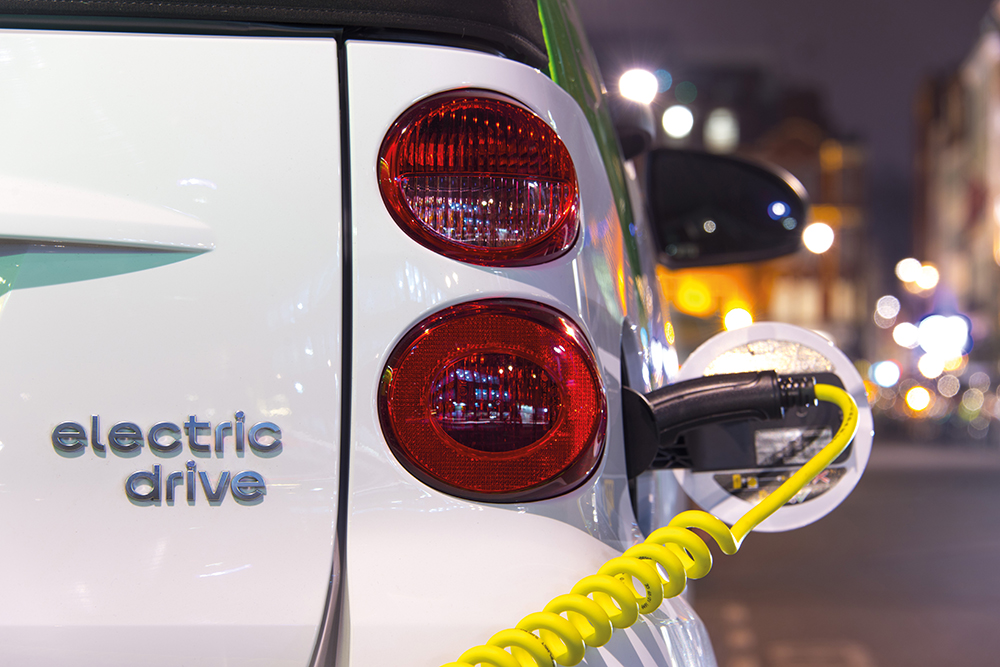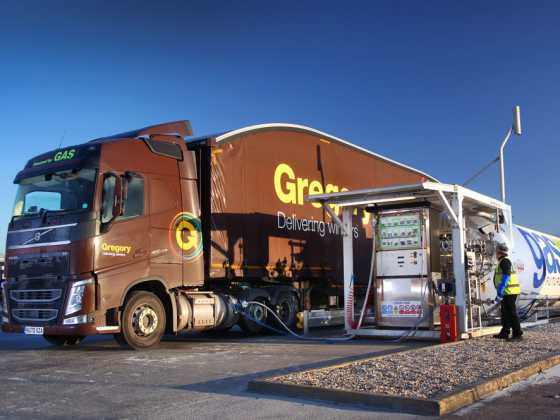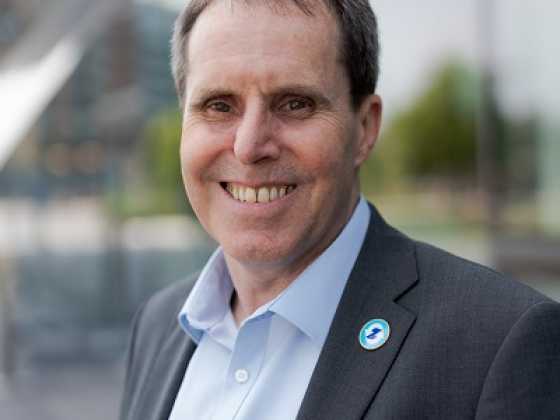Expert Panel: Charging Infrastructure

Electric vehicles continue to go from strength to strength with manufacturers seeing record sales thus far in 2016. GreenFleet and its panel of experts evaluate how well-equipped the UK’s charging infrastructure is to support greater uptake.
Thus far 2016 has been a record year for electric vehicles (EVs), with manufacturer after manufacturer posting record sales and uptake steadily increasing among fleets, as well as for personal use.
As of August 2016, BMW has already sold a total of 34,664 electrified vehicles globally, including all-electric and hybrid vehicles, beating its total sales figures for the whole of 2015.
This growth is being led by innovative vehicles such as the BMW i3, which saw 2,848 deliveries in the month of August alone, up 73.2 per cent compared to the same month last year.
The record sales were not just limited to BMW, as Nissan sold its 15,000 all-electric Leaf this September, marking a major milestone for the world’s best-selling all-electric vehicle.
Renault also handed over the key to its 100,000th EV in September, as Norwegian Åsmund Gillebo picked up his all‑electric Zoe, five years after the French manufacturer launched its first EV.
The picture in the UK mirrors the strong global sales, with 9,657 ultra low emissions vehicles (ULEVs) registered in the UK from April to June 2016, according to figures published by the Department for Transport (DfT) – this represents an increase of 49 per cent compared to the same period last year and 253 per cent compared to 2014.
The Mitsubishi Outlander PHEV still reigns as the UK’s top selling vehicle eligible for the Plug-in car Grant (PiCG), posting sales of 21,708 in Q2 of 2016, an increase of almost 10,000 compared to the same period in 2015.
It was followed by the Nissan Leaf, with 12,837 Q2 sales, the BMW i3, with 4,457 Q2 sales, and the Renault Zoe, which saw 4,339 sales in Q2. The Tesla Model S has also gained significant ground, with 3,312 units sold in Q2 2016, compared to 1,047 for Q2 2015.
Public charging
This progress is a positive sign for the uptake of new low emission technology in the UK and will have to continue if the government is to reach its target of almost all cars and vans to be zero-emission by 2050.
However, an increasing number of plug-in vehicles will require the charging infrastructure to grow at a similar pace to ensure that electrified vehicles remain a practical solution for British motorists.
The government currently operates an incentive scheme that provides EV drivers up to £500 off a home EV charger, but a large proportion of the British public do not have access to off-road parking – so if EVs are to become a truly widespread mobility solution, public charging infrastructure will need to develop to a point where customers are confident they can easily charge their vehicles.
Chargemaster’s Mark Bonnor-Morris opines that network operators will need to provide a number of different solutions to accommodate for different EV user groups.
He says: “The fact that not all EV drivers have access to off street parking (especially in cities) means that there will always be a requirement for a public charging network. To encourage and increase the uptake of EVs, network operators need to provide solutions for the different EV user groups, from low power on street overnight charging to high power rapid charging for the next generation of 80kW+ batteries coming to market.”
Mark believes that customer confidence in a public network is crucial, meaning that charging networks have to be underpinned by “exemplary levels of reliability” and supported by up to date data to help drivers select the correct location and type of charger to match their needs. This is a feeling echoed by the New Motion’s Sander van der Veen, who also highlighted the issue of providing charging facilities to families without a private drive.
Sander explains that the majority of early adopters were drivers with their own private drives and an increasingly important issue will be providing charging facilities to families without one.
He says: “As mass market electric vehicles are coming to market in the next two to four years, more and more families without private drives will be dependent on on‑street ‘domestic’ charging, essentially public charge points used for private charging.” An innovative solution that could prove useful is charge points that can be fitted into existing lamp posts. A trial took place in Hounslow last year which saw the council trial the new technology developed by German company Ubitricity. The points cost just £70 and utilise existing infrastructure and so could go some way to tackle to issue of on street charging.
Alternatively, Go Ultra Low’s Poppy Welch believes that roadside charging is an important, “but not critical”, facility for most EV owners.
She says fleet managers should be “encouraged by the fact that there are already more than 11,000 publicly‑accessible charge points located across the UK and the fact that Britain already has the best rapid charger network in Europe”.
Poppy also believes that EV drivers travelling further afield can be reassured by the fact that 96 per cent of motorway service stations now also have rapid charger facilities.
Gary Sterling of Everwarm, however, believes there are still a number of issues that need to be addressed. He draws attention to the fact there are still “blank zones” where there is no charging coverage for a significant distance throughout the country.
While he can clearly see that the UK has “taken huge strides in recent years” to develop its charging infrastructure, Gary warns “there is still work to be done” because, quite simply, “if there are no chargers there are no electric vehicles”.
Current challenges
Gary believes that a major challenge facing EV drivers in the UK is the reluctance of charge point providers to offer a “transparent network”.
He says: “There are EV drivers in this county who will have a wallet full of RFID cards for various networks just so they have security that when they get to the charger they can actually use it. When you compare this with countries across Europe, they will allow you to charge a vehicle from a single card because the networks have an agreement to allow roaming on each other’s networks.”
Gary adds that there is “no reason” why this kind of system cannot be implemented in the UK, as it would likely be a big step to improving the practicality of EVs on British roads.
Sander of New Motion also lists this lack of interoperability as a major issue, again citing the issue of drivers needing to carry around a variety of different RFID cards.
Sander believes that these networks could still profit through roaming and suggests issuing a “mark-up for the cost of other charge cards,” which he thinks could be a “simple and straightforward solution that needs limited adjustments to today’s technology.”
He adds: “One easy way to enable roaming is to create a central charge card database with real-time authentication. Of course, the various networks will need to agree on the commercial conditions first. A more advanced option is the implementation of a decentralised solution called Open Charge Point Interface (OCPI): an independent charging standard to exchange charge point information between charge point operators and/or mobility service providers.
“In terms of operating charge points, some networks seem to go down the route of purely app based charging, which may work but I would for the short- to mid-term advocate still having the option to simply swipe a card/tap your phone, purely because of the ease of it. In the long run the electric vehicle will most likely identify itself at a smart charge point and start and pay for charging itself.”
Another key challenge identified by the panel was coverage, Gary says: “We need to ensure an infrastructure exists which allows EV drivers to commute with as little disturbance to their journey as possible.”
Mark Bonnor-Moris singles out gaps in the public network in more rural locations, such as Wales and the South West, as presenting a significant barrier to drivers in those areas adopting EVs, and admits it will “take time for these gaps to be filled.”
Poppy Welch has a positive outlook on the current state of EV charging in the UK, as there are currently over 11,000 charge points around the UK, which is set to increase with the allocation of government funding through the Go Ultra Low City scheme. The scheme has seen a total of £40 million allocated to promote EVs in Nottingham, Bristol, Milton Keynes and London and will help to fund around 750 new public charge points.
Discussing the practicality of EVs and charging infrastructure, she adds: “Research has found that currently more than a third of UK motorists never travel more than 80 miles in a single trip, comfortably within the 100‑mile range of most pure EVs. Therefore, many drivers do not have to go out of their way to recharge an EV when it is easy to refuel from the comfort of their own home, simply by plugging their vehicle in overnight.”
Range anxiety
Concerns over public charge point coverage lead into one of the biggest barriers to adoption for EVs – range anxiety. The fear that a driver may not be able to easily re‑charge their vehicle, which would limit their ability to freely travel as they are accustomed to in a conventionally fuelled car, is a big hurdle that needs to be overcome.
Sander van der Veen thinks that the ‘simple answer’ to this problem is to increase charge point density, however, he believes that enabling roaming on different networks could also be a “much more practical step.”
Sander suggests that along with greater interoperability, greater “transparency” is also required – meaning EV drivers need to be able to see real time charge point status and pricing.
One of the best sources for this information is Zap-Map, which covers charging networks in the UK and provides EV drivers with key charge point information, as well as its ‘Zap‑Chat’ function, which allows users to provide status updates and last-mile information.
However, Sander believes there are still “significant improvements to be made” and that charge point providers can do more to achieve the goal of having ‘one single view of seeing the complete charge network in the UK.”
Mark from Chargemaster opines that “confidence in the public charging network” is the key to tackling range anxiety and echoes Sander’s thoughts that drivers need to be able to locate all nearby charging stations.
He says: “Smartphone apps or in-car navigation systems need to allow drivers to locate nearby charging stations and their prices, and check availability. To make this happen EV network operators need to provide accurate and up to date data on their networks, in terms of locations, type and availability.”
In addition to greater confidence in charging infrastructure, Mark also suggests that the “next generation” of EVs will come with bigger capacity batteries and much higher ranges of around 200 miles, which will make range anxiety less of an issue.
We are already seeing these kind of technological developments with Tesla’s recently unveiled Model 3, which will reportedly boast a range of up to 215 miles and start at around £30,000.
Despite drivers’ reservations over the practicality of EVs, Gary Stirling believes that greater education could go a long way to tackle range anxiety, regardless of improvements to EV batteries and better charge point coverage.
Gary says: “I believe taking the time to offer some advice to people with range anxiety would go a long way to settling their concerns. When I’ve spoken with potential EV owners, a number of them have expressed concerns over both vehicle range and charging infrastructure. When the time is taken to show these people the vast coverage of chargers available to them and just how far the vehicles can travel on a single charge it soon changes their mind.”
Poppy Welch also believes that better education is key to assuaging range anxiety and advises fleet managers that “most pure electric vehicles have a duty-cycle perfectly suited to the needs of millions of operators running small and medium-sized vans as back-to-base or short-haul vehicles”.
She adds: “Recent research from the RAC Foundation found that EV drivers will now never be more than 20 miles from a service station charge point on 98 per cent of the motorway system in England, on 98 per cent of the motorways in Scotland and on 100 per cent of the motorways in Wales. As well as this, following the Road Investment Strategy, Highways England also pledged £15 million to ensure that on our major roads there is a rapid charge point at least every 20 miles.
“But driver education is key. Many drivers cite range anxiety as their main issue for not making the switch, but the technology is here and the infrastructure is constantly growing. Recent research from Nissan found that public charging locations will outnumber the amount of petrol stations in the UK by 2020, meaning charging on the go will be even easier. Also, new US study by MIT found that range anxiety is overblown, and that 87 per cent of personal vehicles could be replaced with an electric car today. As more drivers understand that these vehicles are cars for today and are fit for many purposes, a time when electric vehicles become the norm seems that much closer.”
Looking to the future
Both Gary Stirling and Sander van der Veen are in agreement that we will see the continual development charge point technology, which will likely lead to an increase in rapid chargers that will soon be able to charge your car in 10 minutes or less. Gary points out we have already seen the development from 3kW chargers to 50kW rapid chargers, as well as 125kW Tesla superchargers in some areas.
Mark Bonnor-Moris thinks that a lot of Local Authority based schemes are likely to transition to the private sector over the next few years, which he believes will result in increased investment and higher levels of customer service.
Go Ultra Low is confident that the majority of charging will continue to happen at the home, and Sander sees an increase in charge point integrated solutions, either with street furniture (such as street lights), which would help to accommodate those drivers who do not have access to off-road parking.
One exciting possibility we could see in the future is the introduction of wireless charging, as Gary highlights a 20kW wireless charging system has been developed over the past three years by the government-backed Oak Ridge National Laboratory (ORNL) with Toyota, Cisco Systems, Clemson University and Evatran.
Wireless charging systems built into roads could revolutionise the practicality of EVs and effectively put an end to range anxiety, but, as Gary notes, “only time will tell” if this really is future of EV charging. Until then, charging infrastructure is steadily building and is already in a position to support the vast majority of drivers if they were to purchase an EV. It appears that better education could be the key to greater adoption in the immediate future, as many are unaware of the number of charging solutions available to them.
Expert final thoughts
Mark Bonnor-Moris
"Currently there are too many small regional schemes and gaps in national coverage. However over the next few years I expect a lot of the Local Authority based schemes to transition to the private sector and for the remaining networks to consolidate. These networks will benefit from a higher number of users and transactions, resulting in increased investment and higher levels of customer service. The EV driver will benefit from a more extensive and robust network."
www.chargemasterplc.com
Gary Stirling
"We’re seeing the continual development in the technology behind the charge points to try and reduce charge times. We also see a wireless charging system has been unveiled in the US that has the potential to match the power output of plug-powered fast-chargers and is capable of charging electric cars on the go. The 20kW wireless charging system, has been developed over the past three years by the government‑backed Oak Ridge National Laboratory with Toyota, Cisco Systems, Clemson University and Evatran. Is this the future of EV charging? Only time will tell."
www.everwarmgroup.com
Poppy Welch
"We expect that the majority of charging will continue to happen at home, where drivers can conveniently charge their EVs. In addition to the many publicly‑accessible charge points already installed at locations across the UK, many more new units are being installed in urban and rural areas in the coming months. Around 750 extra new public charge points will be delivered across the UK through £40m government investment in the Go Ultra Low City scheme."
www.goultralow.com
Sander van der Veen
"As technology progresses we will see an increase in rapid chargers that will be able to recharge your car in 10 minutes or less. There will still be 22 kW fast chargers as these are cheaper and less demanding on the power grid, which will charge your car in a few hours. As the industry is installing more and more hardware into the public environment we will see an increase in charge point integrated solutions, either with street furniture (such as street lights) or in the ground (such as inductive charging). With increased strain on the energy grids, all these charge points will need to be smart‑connected to be able to participate in Demand Side Response."
www.thenewmotion.com






